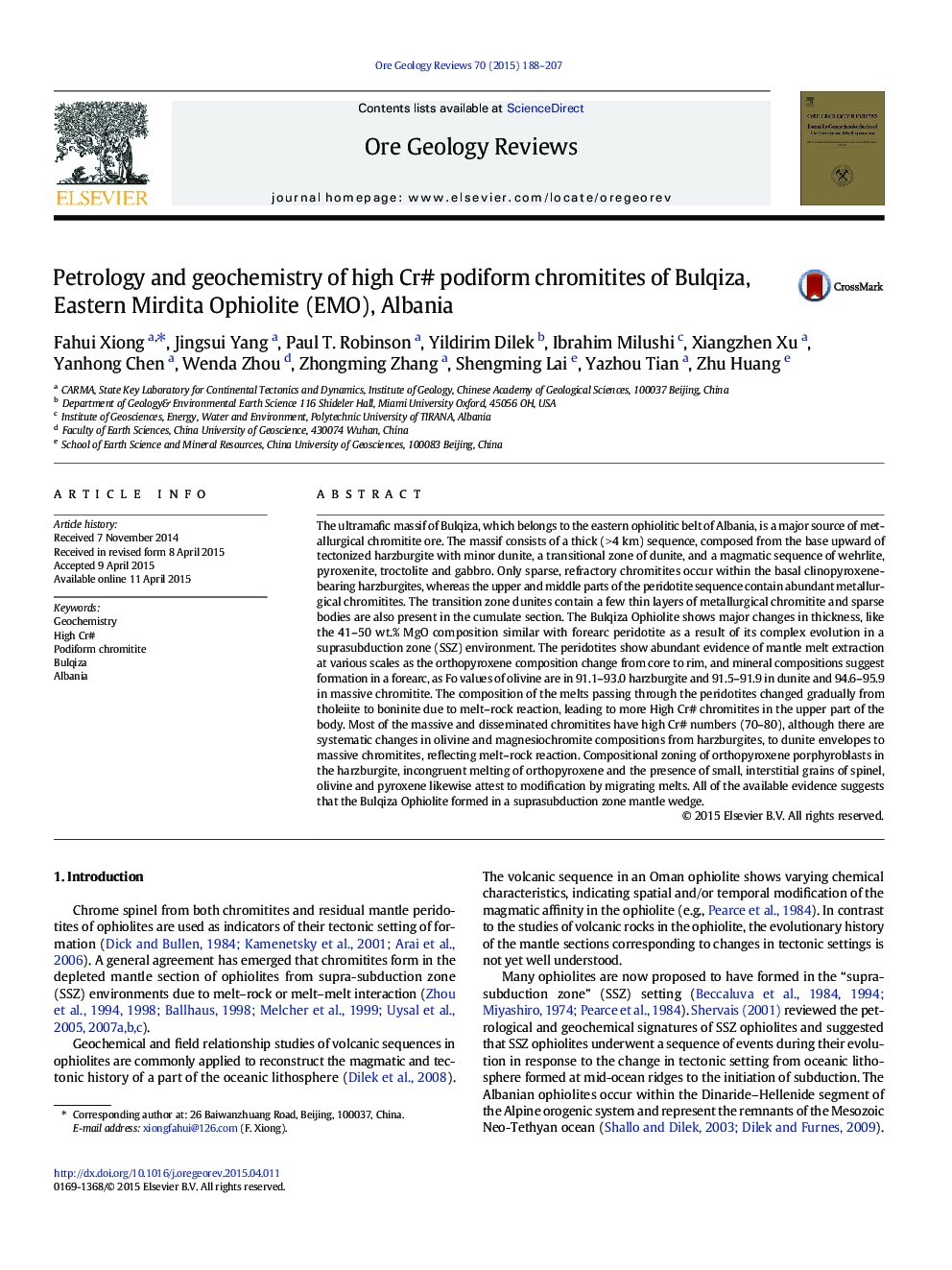| کد مقاله | کد نشریه | سال انتشار | مقاله انگلیسی | نسخه تمام متن |
|---|---|---|---|---|
| 4696975 | 1637234 | 2015 | 20 صفحه PDF | دانلود رایگان |

• High Cr# chromitites of Bulqiza were derived from a boninitic melt with 30–40% partial melting.
• Mineralogy and geochemistry of peridotite show the Bulqiza Ophiolite have formed in the FAP (fore-arc peridotite).
• The calculated ΔlogƒO2 and melt of Bulqiza peridotite and chromitite show they formed in the supra-subduction zone.
The ultramafic massif of Bulqiza, which belongs to the eastern ophiolitic belt of Albania, is a major source of metallurgical chromitite ore. The massif consists of a thick (> 4 km) sequence, composed from the base upward of tectonized harzburgite with minor dunite, a transitional zone of dunite, and a magmatic sequence of wehrlite, pyroxenite, troctolite and gabbro. Only sparse, refractory chromitites occur within the basal clinopyroxene-bearing harzburgites, whereas the upper and middle parts of the peridotite sequence contain abundant metallurgical chromitites. The transition zone dunites contain a few thin layers of metallurgical chromitite and sparse bodies are also present in the cumulate section. The Bulqiza Ophiolite shows major changes in thickness, like the 41–50 wt.% MgO composition similar with forearc peridotite as a result of its complex evolution in a suprasubduction zone (SSZ) environment. The peridotites show abundant evidence of mantle melt extraction at various scales as the orthopyroxene composition change from core to rim, and mineral compositions suggest formation in a forearc, as Fo values of olivine are in 91.1–93.0 harzburgite and 91.5–91.9 in dunite and 94.6–95.9 in massive chromitite. The composition of the melts passing through the peridotites changed gradually from tholeiite to boninite due to melt–rock reaction, leading to more High Cr# chromitites in the upper part of the body. Most of the massive and disseminated chromitites have high Cr# numbers (70–80), although there are systematic changes in olivine and magnesiochromite compositions from harzburgites, to dunite envelopes to massive chromitites, reflecting melt–rock reaction. Compositional zoning of orthopyroxene porphyroblasts in the harzburgite, incongruent melting of orthopyroxene and the presence of small, interstitial grains of spinel, olivine and pyroxene likewise attest to modification by migrating melts. All of the available evidence suggests that the Bulqiza Ophiolite formed in a suprasubduction zone mantle wedge.
Figure optionsDownload as PowerPoint slide
Journal: Ore Geology Reviews - Volume 70, October 2015, Pages 188–207